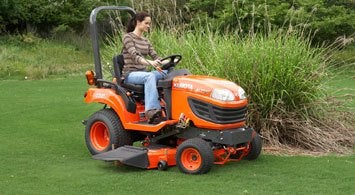
In August we did a piece covering Fall Lawn Care Tips which highlighted the reduced reproductive ability of older grasses and emphasized the importance of overseeding. This week we cover having your soil tested.
It only makes sense: the application of additives to soil prior to having a benchmark starting point risks the overuse of chemicals, over introduction of those chemicals to rivers, ponds and lakes, the unnecessary cost associated with those expensive chemicals, and poor results. Yet, consumers continue to do just that. And the way lawn care products are marketed doesn’t help either. Four-step programs are available at every lawn and garden center, some even having discounts for purchasing all four steps at the same time. But research by leading agricultural institutions of higher learning such as at the University of Minnesota show rarely are these kind of aggressive overtreatments necessary and that they are often detrimental.
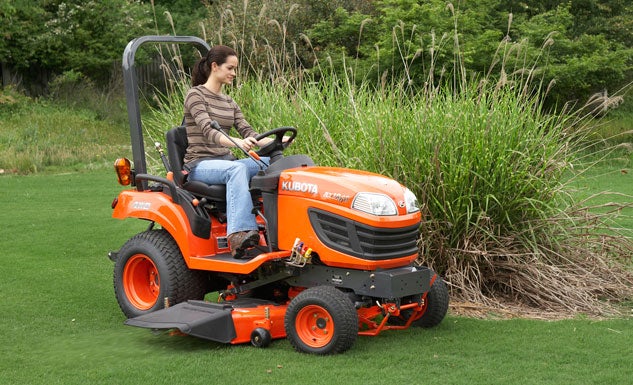
A typical four-step program has an early spring application of fertilizer with a pre-emergent to prevent the germination of crabgrass. Formulations vary, but are typically in the range of 28-0-7 with the first number being the nitrogen (N) content, the second the phosphorus (P) content and the third the potassium (K) content. These programs would then have a second weed and feed application a month or two later with a NPK content somewhere around 28-0-3. Step three would follow a month or two later with fertilizer and an insecticide for grub control. Third step formulations might have a NPK content of 32-0-4. And finally in early to late fall a fourth application would follow with a NPK content in the range of 31-3-8. Sound good? The results may seem so. But these programs actually introduce unnecessary chemicals that encourage leaf growth at the expense of root health.
So what to do? Have your soil tested to determine exactly what is needed and what is not. Most states have agricultural experiment or testing stations, and if not, many universities have agricultural programs capable of testing your soil and offering recommendations as to what is needed. In the Nutmeg State, the Connecticut Agricultural Experiment Station operates four laboratories where the growth of plants and study of pests are investigated. CAES successes are many but count the development of a strawberry resistant to black vine weevil and a fungus that causes root rot; the development of practices that allow vineyards to survive northeastern winters; and tests to detect petroleum-related chemicals in seafood.
With that all in mind, we were introduced to Diane Riddle, a research technician, and Dr. Todd Mervosh, who runs the Inquiry Office, both at the Windsor, CT CAES facility. Riddle explained that soil samples are tested for nutrients using the Morgan Soil Test, a universal extractant test developed by Dr. Morgan while at CAES. Levels of nitrogen, phosphorus, potassium, magnesium and calcium, along with texture makeup, organic matter and pH are quantified and help form the basis of CAES’s recommendations to the farmer, gardener or homeowner.
Nitrogen
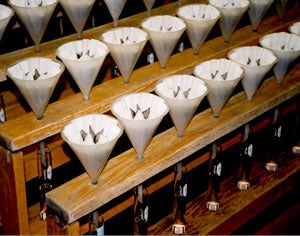
Nitrogen spurs plant growth and comes in organic (mined or naturally occurring), and inorganic (chemically synthesized) forms. If the correct amount is available at a time of growth, the results are impressive. But most of us at one time have spilled fertilizer on a lawn, or know of someone who has, and of the disastrous results that invariably occur. And even if the results of over fertilization aren’t disastrous, root health is unnecessarily hampered. The Morgan Test helps determine the amount of nitrate and ammonium nitrogen present (the amount of nitrogen immediately available) for plants but not the ability of the soil to provide this nutrient throughout the season. This is where qualified interpretation of the test results is essential. And past the effect on the immediate lawn or field being fertilized, overly high nitrogen levels can lead to surface and ground water contamination.
Phosphorus
As we learned in our Fall Lawn Care Tips, phosphorus is necessary for the germination of seed. But phosphorus binds strongly to soil which prohibits access required by new seed, so starter fertilizers have NPK contents such as 18-24-12 or 24-25-4, with high P percentages. Because phosphorus binds to soil it can also build up and reach undesirable levels. Too little and leaves can purple and root health can suffer. Too much and phosphorus moves into the water table where algae and weeds then grow faster than ecosystems can handle while depleting the oxygen necessary for fish and aquatic life.
How To Choose A Transmission For Your Tractor
Potassium
The presence of this nutrient improves plant growth and hardiness but over application can result in excessive soil salinity. Disease resistance, cold weather hardiness and ability to survive drought are benefited by the presence of this nutrient.
Magnesium
Magnesium is considered a secondary nutrient, though it is the central element of the chlorophyll molecule essential for photosynthesis. Low levels are associated with acidic soils and can signal the need for dolomitic limestone or Epsom salts. Most research shows 40-50 PPM (80-100 lbs. per acre) is adequate.
Calcium
Calcium is also considered a secondary nutrient. Deficiencies can be corrected through the addition of limestone, which neutralizes soil acidity. If the pH is correct and the calcium levels low, the addition of gypsum (calcium sulfate) is often prescribed. The calcium to magnesium levels generally should be 7:1 by weight for most soils.
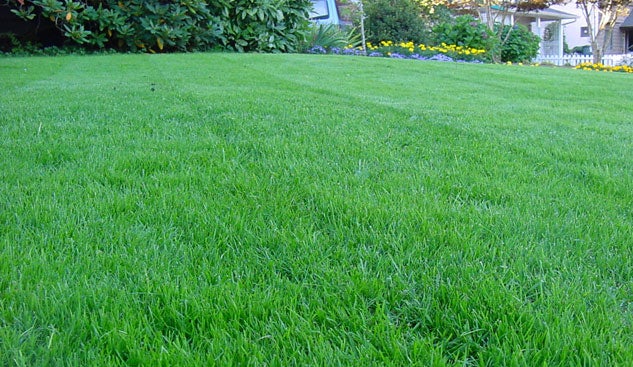
Texture
Texture is the amount of sand, silt and clay in the soil which influences the amount of water and nutrients the soil can hold. Knowing the texture aids in determining the amount of water and fertilizer that will be needed. Sands, loamy sands and sandy loams require more water and lose nutrients more readily than fine sandy loams, loams and silt loams. Silty clay loams and clay loams retain excessive moisture and reduce air movement to plant roots.
Organic Matter
Organic matter influences the amount of water and nutrients the soil can hold. Organic matter is one area where more is better. Low levels can be improved by the addition of compost. Some scientists believe increasing soil organic matter can lead to a reduction of atmospheric CO2 levels that contribute to climate change.
pH
Neutral pH occurs at a reading of 7.0. Below that, soils are said to be acidic and above, alkaline. Soil pH influences the availability of nutrients. When interpreted with texture and organic matter, soil pH indicates how much limestone needs to be added. Riddle explains that limestone additions to an established lawn should be limited to 75 lbs per 1,000 square feet every six months. If the ground has been rototilled, higher amounts may be added. It’s important to recognize that the addition of fertilizer will result in a drop of pH.
What Else to Consider?
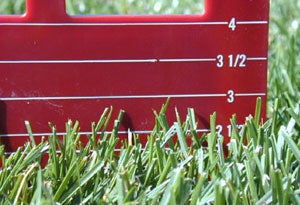
Information from soil testing cannot correct soil or turf problems caused by weeds, insect infestation, disease or site limitations such as not enough sunshine. Weeds are typically treated using herbicidal measures generally comprised of a mixture of two or three ingredients that contain 2,4-D, MCPP (mecoprop) and dicamba (Banvel), though the best defense always is a healthy, well-balanced and deep-rooted lawn. Practice cultural control measures such as mowing at 3”–3-1/2” and doing so frequently so no more than 1/3 of the leaf blade is removed and irrigating deeply but infrequently and not again until the first sign of drought distress is detected (when you see footprints remaining after the turf is walked upon). When herbicides are required, follow all directions on the label. The best time for application will be mid-September to early November.
We asked Dr. Mervosh if glyphosate resistance was becoming a problem. Glyphosate resistance occurs when fields of Roundup-resistant corn and/or soybeans are exposed to repeated glyphosate applications. Dr. Mervosh told us that this had not yet become an issue in Connecticut but in other parts of the northeast it has. The overtreatment of grubs though is fast becoming an area of misuse. Currently there are three chemicals used to combat grub infestation: Merit, Dylox and Acelepryn. Merit has a fairly low toxicity to non-target organisms, while Dylox is more toxic. With many homeowners applying grub treatment every year, Grub-EX containing Acelepryn (Chlorantraniprole) is a better choice as it is believed to be less damaging. Still, the goal should be to create healthy soil conditions where the application of chemicals isn’t needed or is lessened.
Choosing a Work Vehicle: ATV vs. UTV
Both Dr. Mervosh and Riddle recommend that the consumer stay away from four-step programs. Not only are they unnecessarily expensive, but they unfavorably tilt the environmental balance. Their recommendation is that fertilizers be applied only in the fall and the spring. Longtime readers will know our recommendation has always been that if you only fertilize one time per year, do it in the fall. Dr. Mervosh also went on to say that if a homeowner needs to treat crabgrass and then later broadleaf weeds, he recommends one of those treatments be without a fertilizer component. For example, if a step-one type product (fertilizer/preemergent) is used in the early spring, when it comes time to deal with broadleaf weeds a granular broadleaf herbicide or a broadleaf weed killer without fertilizer should then be used. Conversely if a step-two type weed and feed is going to be used, then apply a granular crabgrass preemergent containing pendimethalin or dithiopr but no fertilizer in the early spring.
So, get your soil tested. Add lime and/or organic matter as dictated, fertilize twice a year with the NPK amounts determined though testing, apply grub treatments only as required, and get set to enjoy that perfect lawn.
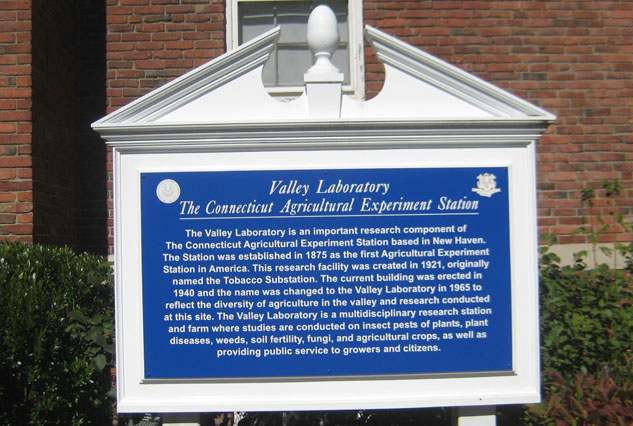
 Your Privacy Choices
Your Privacy Choices